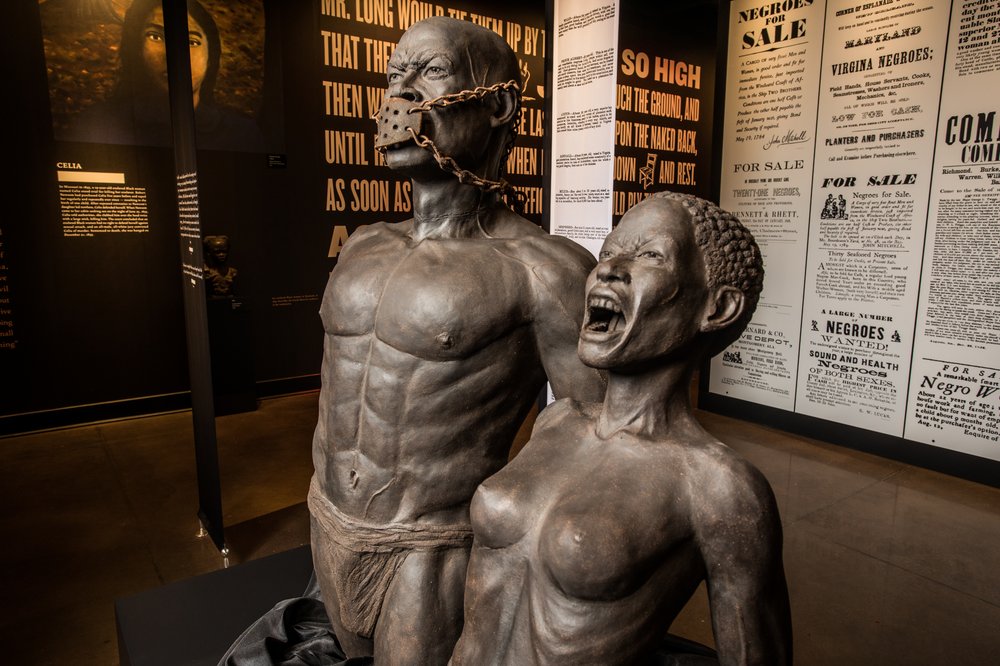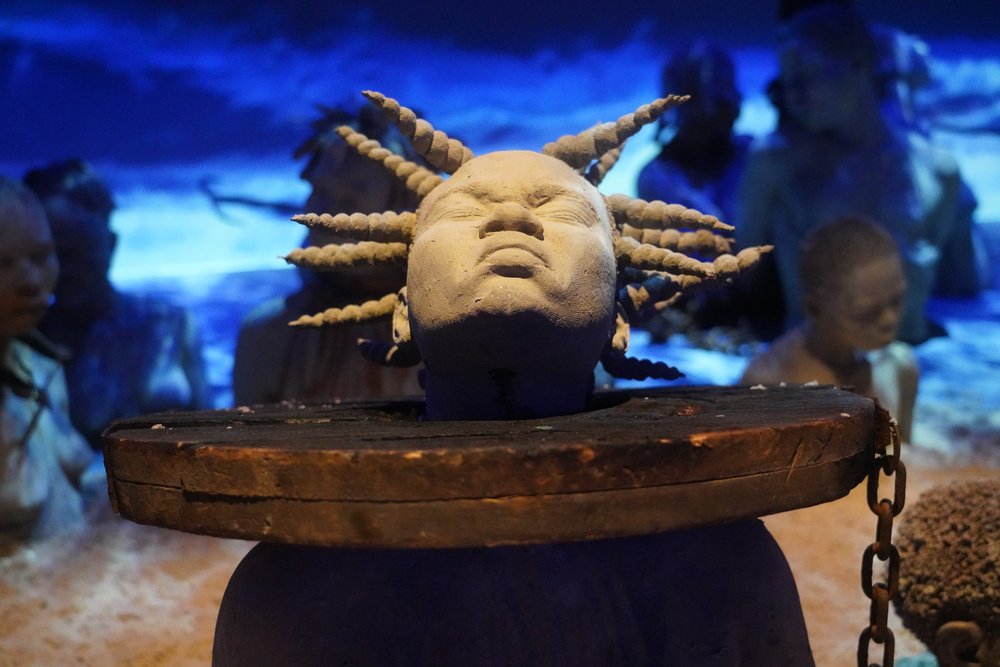New report shines spotlight on enduring stain of slavery in NY
Oct. 25, 2022, 7:38 p.m.
The study by the Equal Justice Initiative calls enslavement a "defining feature" of the Empire State.

A new report details how the transatlantic slave trade fundamentally shaped life and wealth in New York, New Jersey, and other northern areas, and to an extent historians say isn’t commonly known.
“Enslavement is a defining feature of New York City’s origin story,” concludes the report, titled “The Transatlantic Slave Trade,” released Tuesday by the Equal Justice Initiative in Montgomery, Alabama.
“Enslaved people," it states, "cleared and cut the road that would become Broadway, built the wall that Wall Street was named for, paved the roads that expanded the city uptown, and grew crops in Brooklyn to feed their enslavers.”
The study, along with an accompanying museum exhibit and video, follows other recent efforts to engage the public on the legacy of slavery, including The 1619 Project from The New York Times, which highlighted 400 years of slavery in the U.S. and beyond, and artist Kara Walker’s monumental sculpture at the Domino Sugar Factory in 2014, a project that drew large crowds and focused sharp attention on the links between New York, the sugar industry and enslavement.
But in his introduction to the report, EJI Executive Director Bryan Stevenson also alluded to the backlash from conservatives who have introduced or enacted laws in dozens of states to limit the teaching of race and racism in U.S. history – even as a handful of other cities and states, including New Jersey, New York City, and Chicago, have taken up measures to study the impacts of slavery and the issue of reparations.
At a time when some believe we should avoid any discourse about our history that is uncomfortable, we believe that an honest engagement with our past is essential if we are to create a healthy and just future.
Attorney Bryan Stevenson, Equal Justice Initiative
“At a time when some believe we should avoid any discourse about our history that is uncomfortable, we believe that an honest engagement with our past is essential if we are to create a healthy and just future,” wrote Stevenson, a renowned lawyer whose advocacy has helped save dozens of incarcerated people from the death penalty, and whose bestselling memoir was adapted into the film "Just Mercy," starring Michael B. Jordan and Jamie Foxx.
The report, on what the EJI labels “one of the most violent, traumatizing, and horrific eras in world history,” accompanies a new exhibit at the institution’s museum in Montgomery – Legacy Museum: From Enslavement to Mass Incarceration. In 2018, the organization opened the National Memorial for Peace and Justice, a widely acclaimed site that marked the thousands of lynchings that took place in the 19th and 20th centuries. Some 1 million people have visited the two sites since 2018, according to EJI.
The new study examines the roots of the European slave trade in the 1400s all the way to its legacy in U.S. mass incarceration in the 20th century. Initially, the slave trade developed in order to exploit gold, sugar, tobacco, and other natural resources and simultaneously advance “power and influence for Portugal, Spain, Great Britain, France, Italy, Germany, and Scandinavian nations.”

In the American colonies, lawmakers passed severe measures meant to ensure obedience from enslaved men and women. In 1704, New Jersey deemed it lawful for anyone to capture an enslaved person found more than 10 miles from their home, then whip them 20 times and obtain a reward for returning them to their enslaver.
In New York, legislators made it illegal for any enslaved person to possess a gun or “any other kind of weapon” and illegal for three or more enslaved people to gather unless they were engaged in employment “for their Master or Mistress.”
“By 1730,” reads the EJI report, “42% of New York City’s white residents directly enslaved Black people. For most of the 18th century, enslaved people comprised approximately 20% of the city’s population.” By 1771, 33% of the residents in modern-day Brooklyn were enslaved Africans.
By the 19th century, an estimated 40% of all revenue from the U.S. cotton trade poured into New York City, primarily through financial firms and shipping companies who managed the trafficking of human bodies, as well as insurance companies who allowed slave owners to recoup their costs if the men and women they enslaved died. Those insurance companies include New York Life and Aetna, which the report notes are the largest life and health insurance firms today.
By 1730, 42% of New York City’s white residents directly enslaved Black people. For most of the 18th century, enslaved people comprised approximately 20% of the city’s population.
Equal Justice Initiative report
Additionally, the report notes that New York’s political leaders and media argued against emancipation in the 1840s and 1850s, arguing it would harm employment prospects for whites. New York City twice voted against Abraham Lincoln, in 1860 and 1864.
“There's just no way to separate out slavery from the explosion of New York as a financial center,” said Sia Sanneh, a senior attorney at the EJI.
Much of the public, historians said, is oblivious to the history of enslavement in New York. Although state standards established for New York’s public school students include sections on life as a slave in New York as well as abolitionist efforts and the state’s eventual siding with the Union cause, Susan Goodier, an assistant professor in the history department at SUNY Oneonta, said this is not borne out by the time students reach college.
“My New York State History students have no idea people in New York were enslaved,” said Goodier.
Others develop serious misconceptions.
'Horrors of slavery' in NY
"Folks that think northern slave owners were nicer to their slaves than southern ones – not true,” said Jennifer Lemak, the chief curator of history at the New York State Museum, in Albany. “We have written and physical evidence of the horrors of slavery here in New York State."
And although slavery officially ended in the state in 1827, Goodier said “the truth was that anyone born before July 4, 1827 owed their masters 25 years of servitude if they were female and 27 years of servitude if they were male, which means potentially that some people lived in servitude until 1848,” while others arrived in the state after freeing themselves but were forced back into enslavement under the Fugitive Slave Law of 1850.
Sanneh said the report and exhibit continue beyond the Civil War, through Jim Crow, lynching and into the modern era, when millions of African Americans have been locked up due to racially biased drug laws and stop-and-frisk policing. “We try to, I think, talk about these eras as different,” said Sanneh, “but help people see the through line that connects them.”
The museum’s A Transatlantic Slave Trade wing includes more than 200 new sculptures and original animated short films narrated by artists Lupita Nyong'o, Don Cheadle, and Wendell Pierce.
This article was updated: It corrects the spelling of Sia Sanneh, a senior attorney at the Equal Justice Initiative.